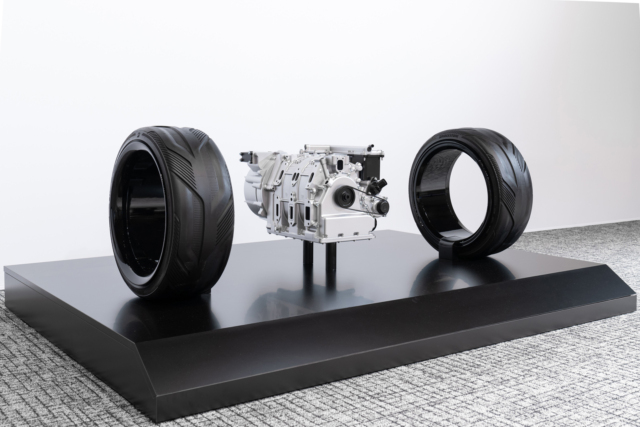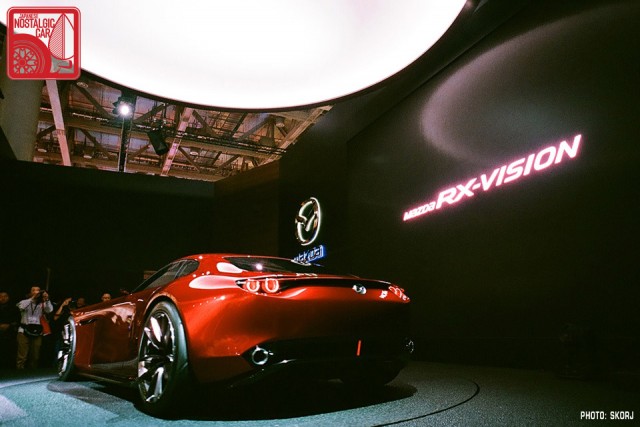This week Toyota, Subaru, and Mazda jointly announced that they were teaming up to develop Japan’s next generation of combustion engines. Each company would specialize in the iconic engines that built their brands while striving toward carbon neutrality. Toyota would focus on compact inline-fours, Subaru on boxers, and Mazda on rotary engines. The sweeping announcement glossed over a little nugget of information from Mazda’s part of the presentation — that it’s building a twin-rotor engine being considered for sports cars.
First of all, for the presidents of three carmakers to join forces in an announcement like this is pretty much unprecedented. But in an increasingly competitive industry small fish like Subaru and Mazda can’t go it alone. Toyota is the giant, and they’re finally putting their approximately 20 percent stake in Subaru and approximately 5 percent stake in Mazda to good use.
Secondly, the doubling down on internal combustion engines seems to fly in the face of industry trends toward electrification. But Toyota, Subaru, and Mazda aren’t turning their backs on climate change. Rather, they say that the ultimate goal shouldn’t be electric cars or bust. Instead, it should be the reduction of carbon from the atmosphere.
With their next-gen engines, the trio believes that cleaner burning combustion engines will help get Japan’s auto industry to carbon neutrality, and not just during driving. They’re taking a holistic approach that considers the entire manufacturing process, from digging up the iron ore to disposing of the car at the end of its life. They’ve teamed up with Japanese oil companies like Idemitsu and Eneos to develop biofuels and synthetic fuels, and will continue their pursuit of hydrogen fuels. Toyota, Subaru, and Mazda believe this will keep their next-gen engines from spewing more carbon into the air.
That’s the background of the team-up, but enough about all that. The thing that most piqued our interest was the two-rotor engine on display at the press conference. It’s a longitudinally mounted rotary engine in the familiar sequence of housings dating back to the Cosmo Sport’s 10A.
President Masahiro Moro said that not only is the rotary engine an indelible part of Mazda’s identity, but its compact size and power-to-size ratio is ideal for use as a range extender. It’s quieter and vibrates less than a conventional engine as well and, using the Iconic SP concept as an example, the rotary will allow designers to style lower hoodlines and more streamlined bodies with lower centers of gravity.
While the system is similar to the rotary MX-30’s, the most exciting part is that Mazda says, “It is also being considered for use in sports cars.” That’s a pretty vague statement, but it’s more than what many other companies are willing to say.
Separate from this week’s announcement, it was also revealed that Mazda was planning to revive the RX-7 but that those plans were dashed as a result of the 2008 global financial crisis. As Motor1 reports, the FD RX-7’s chief engineer Nobuhiro Yamamoto said that after the NC Miata’s 2005 launch, he was selected to develop in 2007 a new FR platform that was going to underpin the ND Miata and a new RX-7.
With the Lehman collapse taking place the following year Mazda scrapped the RX-7 plan and forged on with the ND, delaying its launch from 2012 to 2015. Given the timing, the project couldn’t have gotten very far. Still, it’s notable that the car would have returned to its roots as an RX-7 rather than build upon the RX-8.
Mazda’s commitment to the rotary is admirable. Even with all the advantages Moro-san pointed out it’s probably not the most lucrative project. But when the entire auto industry is converging on electric crossovers that are all pretty similar to one another, projects like this Toyota-Subaru-Mazda partnership inject some much-needed personality into cars. The three CEOs said they would work together but also maintain a “friendly rivalry” with each other, and it’s refreshing to see that each brand will maintain some of its identity. May the best engine win.










This is great to read, nice that some manufacturers can think for themselves.
Maybe Toyota’s inline 4 can go in a new Celica. 🙂
By the time they’re done developing this, will you even be able to buy an ICE car?
I celebrate Mazda’s spirit of never giving up with the rotary engine. and I think that the most logical alliance comes of using the development of hydrogen and rotary from 2002 with the latest advances of Toyota with hydrogen, with that base of knowledge and funds one can hope for a new rx-vision zoom zoom dorito
May all 3 engines win. It’s always good to have multiple, distinct choices in something like a car engine and drivetrain, engineered and built by those who know their way around their preferred choices.
Japanese auto manufacturers stole a march on everyone in the 1970s, by getting early to where the industry needed to be in the qualities of their product offerings. They just might do so again (I hope they do).
I am glad to see r&d money being spent on furthering ICE efficiency. I am still a skeptic on hydrogen as an automotive fuel however. It still has a number of technical and infrastructure hurdles the size of mount everest to overcome.
May it be powerful, high-revving, and easily plucked of all the hybrid garbage for conversion as a prime mover.
Boxers can die on the vine — pointless and underperforming in every metric but weight distribution. And no, not counting turbos, but then let’s turbo an I4 (think Evo v WRX).
I don’t like the added hassle of more head gaskets and harder to reach spark plugs either!